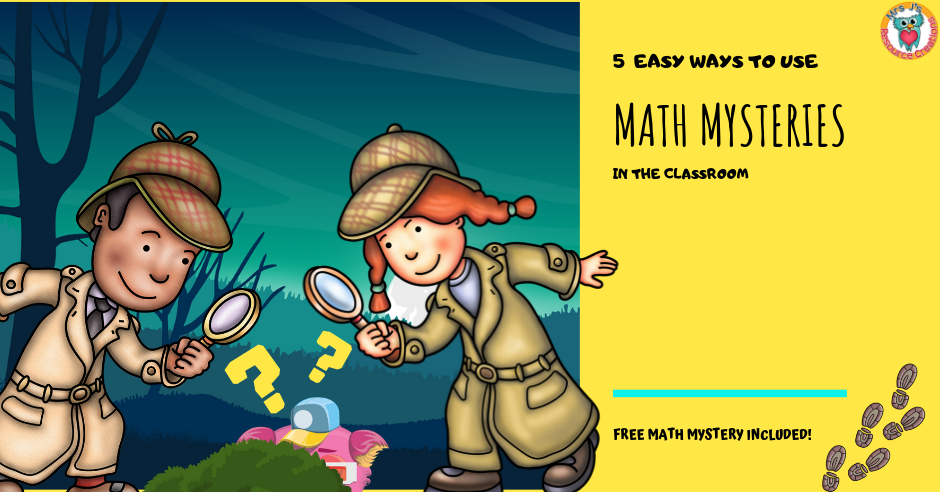If you’re intrigued by math mysteries and wonder how to incorporate them into your teaching, this guide is just for you. Plus, there’s a complimentary math mystery awaiting you at the end of this article!
Understanding Math Mysteries
Math mysteries offer a fun and interactive way to engage students in extensive math practice and revisions in the classroom. They’re great for reinforcement, early completers, enrichment, preparation for tests, pre-holiday revisions, or for substitute teachers’ use.
One of the essential features of these mysteries is ensuring students get the correct answers. This makes it an excellent tool to gauge your students’ grasp on the math topic presented in the mystery. If they struggle with unlocking the codes or finding the clues, it indicates which areas might need revisiting.
I’ve crafted these mysteries to be straightforward. They require NO PREPARATION. Just print, distribute, and get solving! Below are various ways to integrate them into your classroom:
- Solo Tasks
- Provide clues sequentially or hand out the entire mystery for students to solve at their leisure, such as when they finish other tasks ahead of time.
- Remember: clues should follow the sequence I’ve provided (1-5). If you’re altering the sequence, withhold the suspect list until all clues are resolved.
- Using these individually is perfect for revision, test preparation, early completion, or evaluation.
- Team Tasks
- An eco-friendly option that promotes teamwork. I’d recommend teams of 2-6.
- Teams can collaboratively tackle clues, assisting each other.
- Mixed-ability groups thrive when working on a unified grade level. However, to customize, you can opt for different grade levels of the same mystery, ensuring levels aren’t disclosed. For a Grade 4 class, for instance, offer Grade 5 mysteries for advanced students, Grade 4 for average students, and Grade 3 for those needing a simpler version. Feel free to interchange clues between Grade 2-6 versions, given the clue number remains unchanged. The free mystery download provides diverse levels to explore this approach. For any further guidance, do contact me at jjresourcecreations@gmail.com.
- Again, it’s as hassle-free as printing and distributing, just with the added task of forming groups.
- Spice it up with a friendly competition to see which group unravels the mystery first!
- Math Stations
- Incorporate math mysteries within your math stations. Either use one clue for each station or rotate a new clue daily.
- Students can retain clues they’ve deduced. Wait until all five clues are done before offering the elimination list for them to piece the mystery together.
- This method suits if you aim to:
- Extend the activity over time.
- Incorporate tangible tools to aid math-solving.
- Encourage student collaboration.
- Focus on a specific skill in a lesson.
- For added excitement, incorporate magnifying glasses, detective gear, and themed props!
- Class-wide Activity
- If you’re pressed for time or wish to save on printing, consider this:
- Divide students into five groups, possibly based on their math prowess, and assign each a clue. Once solved, the entire class can come together to piece the clues.
- Focus on a clue per lesson. Model and teach the necessary math skill for that clue. To conserve paper, display the clue and guide students to note down the essentials, progressing through problems in their workbooks. They can later decode the mystery collectively or individually.
- Explore this link for more paper-saving tips with math mysteries.
- Homework
- Assign math mysteries as post-unit tasks or for periodic reviews during breaks. Opt for holiday-themed mysteries for a diverse skill set or content-centric mysteries for end-of-unit tasks. If you choose a level lower than your students’, it can serve as a refresher from the previous year, offering insights into what might need a quick review. It preps students mentally to grasp new content in that skill domain.

